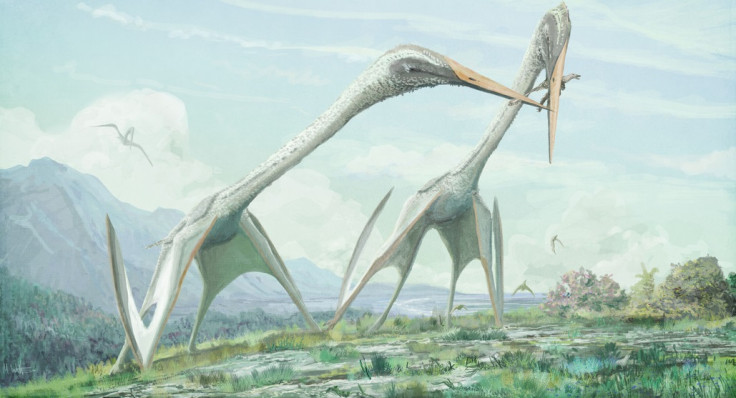Mysterious bone discovered at Canada dinosaur site belonged to a pterosaur
The pelvis bone is now thought to have been that of a pterosaur.

A mysterious bone discovered at Alberta's Dinosaur Provincial Park (Canada) belonged to an ancient flying reptile known a pterosaur, scientists have discovered, after two years of investigations.
The bone was found in 2015 and puzzled scientists from the beginning due to a strange, unusual shape.
"It confused us for a long time, because it's such an unusual bone," said Greg Funston, a UAlberta PhD student in palaeontology. "There are a lot of features to it, but none of them are like anything we've ever seen before."
Flying reptile
At first, researchers hypothesised that the bone had belonged either to a theropod dinosaur or to a prehistoric bird, but they could not reach a consensus.
In a study now published in the journal Facets, Funston and colleagues describe the strange features of the bone and compare it to other known species.
Their in-depth investigations led them to conclude that the bone belonged to a specimen from the pterosaur species. Pterosaurs were not dinosaurs, they were ancient reptiles that had an ability to fly. However, they lived alongside dinosaurs, thriving at the same time as them and disappearing during the same mass extinction event 66 million years ago.
The bone studied here is the pelvis bone of a specific type of pterosaur - an azhdarchid. These were oddly proportioned pterosaurs with massive heads, long necks, and short wings proportionate to their body size.

Analyses of this pelvis bone shed new light on how azhdarchids would have moved around Earth. Although these strange creatures would have been able to fly, there are indications it probably spent a lot of time on land.
Indeed, the features of the pelvis support previous the results of past research which suggested that azhdarchids were well adapted for walking on land.
They have long forelimbs and wings but most of the propulsion would have come from their hind limbs, just like the majority of land animals. Additionally, the scientists noticed evidence of muscle scarring on the bone - a sign that the animals had strong musculature to support their land transport.
"If you compare this muscle reinforcement to other pterosaur pelvises, these azhdarchids are an order of magnitude stronger. Though they would have been able to fly, that's not typically what they were doing. The shape of the pelvis tells us that this animal was better built to deal with forces on the ground," Funston explained.
This means that they were very different from their ancestors, who spent a lot of time flying. Pterosaurs likely adapted to land travel to accommodate not only their larger bodies but also their hunting behaviour of "terrestrial stalking" - hunting their prey by sticking close to their food source.
© Copyright IBTimes 2025. All rights reserved.






















